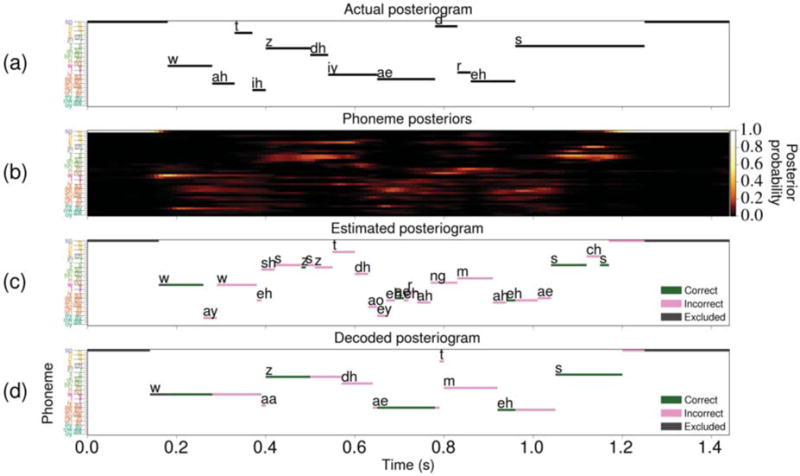Figure 6.

A sample set of results obtained using HGWs from subject A during perception of the utterance “What is the address?” by a female speaker in the Gump set. In all four visualizations, the ordering and coloring of the phoneme labels given in table 2 are used. Some of the data points specifying silence at the start and end of the stimulus were excluded from the visualizations. (a) The actual posteriogram showing the phonemic transcription of the stimulus. (b) The phoneme posterior probability distribution at each time point during the task. (c) The estimated posteriogram constructed by classifying the phoneme posteriors in (b) using the most likely phoneme at each time point. Here, the green and pink points signify classifications that were considered correct and incorrect, respectively. Dark gray points signify data that were excluded from the calculation of the posteriogram accuracy. (d) The decoded posteriogram computed by the Viterbi decoder, which is represented using the same coloring scheme as the estimated posteriogram. For this specific decoding result, the posteriogram accuracy is 48.6% and the phoneme error rate is 50.0%.
